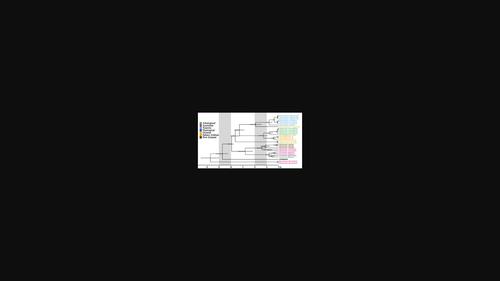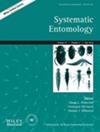Phylogeny, biogeography and classification of Teletisoptera (Blattaria: Isoptera)
IF 4.7
1区 农林科学
Q1 ENTOMOLOGY
引用次数: 7
Abstract
Termites are social cockroaches distributed throughout warm temperate and tropical ecosystems. The ancestor of modern termites roamed the earth during the early Cretaceous, suggesting that both vicariance and overseas dispersal may have shaped the distribution of early diverging termites. We investigate the historical biogeography of three early diverging termite families –Stolotermitidae, Hodotermitidae and Archotermopsidae (clade Teletisoptera) – using the nuclear rRNA genes and mitochondrial genomes of 27 samples. Our analyses confirm the monophyly of Teletisoptera, with Stolotermitidae diverging from Hodotermitidae + Archotermopsidae approximately 100 Ma. Although Hodotermitidae are monophyletic, our results demonstrate the paraphyly of Archotermopsidae. Phylogenetic analyses indicate that the timing of divergence among the main lineages of Hodotermitidae + Archotermopsidae are compatible with vicariance. In the Stolotermitidae, however, the common ancestors of modern Porotermes Hagen and Stolotermes Hagen are roughly as old as 20 and 35 Ma, respectively, indicating that the presence of these genera in South America, Africa and Australia involved over‐water dispersals. Overall, our results suggest that early diverging termite lineages acquired their current distribution through a combination of over‐water dispersals and dispersal via land bridges. We clarify the classification by resolving the paraphyly of Archotermopsidae, restricting the family to Archotermopsis Desneux and Zootermopsis Emerson and elevating Hodotermopsinae (Hodotermopsis Holmgren) as Hodotermopsidae (status novum).

Teletisoptera的系统发育、生物地理学和分类(蜚蠊目:等翅目)
白蚁是群居蟑螂,分布在暖温带和热带生态系统中。现代白蚁的祖先在白垩纪早期在地球上漫游,这表明替代性和海外传播可能塑造了早期分化白蚁的分布。我们使用27个样本的核rRNA基因和线粒体基因组,研究了三个早期分化白蚁科的历史生物地理学——白蚁科、Hodotermidae和Archotermosidae(Teletisoptera分支)。我们的分析证实了Teletisoptera的单系性,Storotermidae与Hodotermidae+Archotermosidae的分化约为100 马。虽然Hodotermidae是单系的,但我们的结果证明了Archotermosidae的副系性。系统发育分析表明,Hodotermidae+Archotermosidae主要谱系之间的分化时间与亲缘关系是一致的。然而,在盗蛛科中,现代盗蛛和盗蛛的共同祖先大约在20岁和35岁之间 Ma,表明这些属在南美洲、非洲和澳大利亚的存在涉及水上分散。总的来说,我们的研究结果表明,早期分化的白蚁谱系是通过水上分散和陆桥分散的组合获得当前分布的。我们通过解决Archotermosidae的并列性,将该家族限制为Archotermpsis Desneux和Zootermopsis Emerson,并将Hodotermosinae(Hodotermosis Holmgren)提升为Hodotermisidae(status novum)来澄清分类。
本文章由计算机程序翻译,如有差异,请以英文原文为准。
求助全文
约1分钟内获得全文
求助全文
来源期刊

Systematic Entomology
生物-进化生物学
CiteScore
10.50
自引率
8.30%
发文量
49
审稿时长
>12 weeks
期刊介绍:
Systematic Entomology publishes original papers on insect systematics, phylogenetics and integrative taxonomy, with a preference for general interest papers of broad biological, evolutionary or zoogeographical relevance.
 求助内容:
求助内容: 应助结果提醒方式:
应助结果提醒方式:


